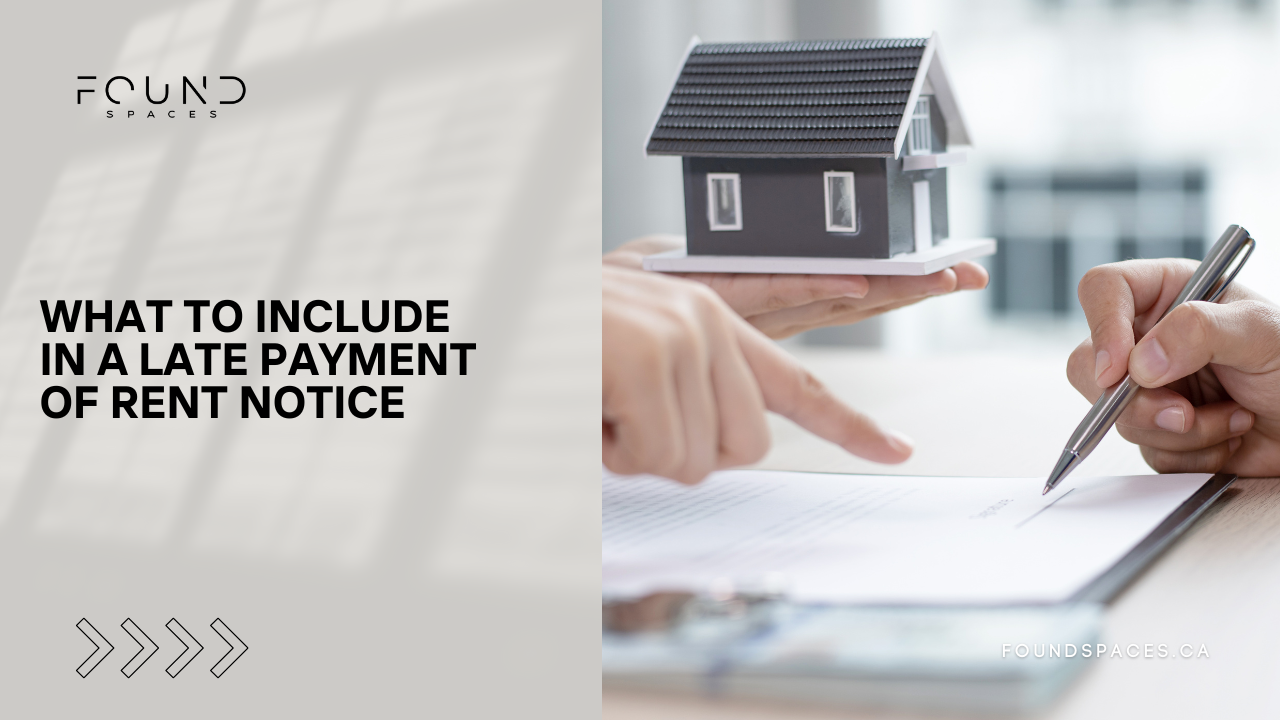When drafting a late payment of rent notice, it’s important to include essential details to keep communication clear. Start by listing tenant information, such as their full name and contact details. Then, specify the property address where they reside. The date the notice is issued should also be clear. Include specifics about the missed payment: when it was due, how much is owed, any late fees that apply, and if there’s a grace period before those fees kick in.
Provide a deadline for payment and outline potential consequences for non-payment like eviction. Offer accepted payment methods and be sure to include your contact information for questions or concerns, finally signing the document to add authority.
Property Details
When writing a late payment of rent notice, always include accurate property details. Begin with the full address of the rental unit, making sure to spell out the street, city, and province. For example, if the address is 220 Caroline Street South, Durand, Hamilton, Ontario, list it in full, including the unit number if applicable. This helps avoid confusion, especially in buildings with multiple units.
Specify the type of property; whether it’s an apartment, condo, or single-family home. If there are notable features like a backyard, swimming pool, or in-unit laundry, mention those as well. These details give clarity to both parties and support legal documentation.
Include the name of the landlord or property manager responsible for the unit. If a third-party management company, like Found Spaces, oversees the rental, include this information. Found Spaces encourages landlords to clarify the point of contact for payments and maintenance to reduce miscommunication.
If shared amenities like gyms or parking are tied to payment status, this is a good place to reference them. Also, outline key lease terms related to maintenance responsibilities and utility payments. Clearly state whether utilities are included in the rent or billed separately. At Found Spaces, we recommend listing any lease-specific clauses that affect payment terms or tenant obligations for full transparency.
Date of Notice
Clearly indicate the date when the notice is being issued. Use a standard format, such as MM/DD/YYYY, making sure it is prominent for easy reference. Including the day of the week can add clarity. If the notice is sent electronically, it is also helpful to note the time of day it was sent.
This date serves as a crucial point for calculating any relevant deadlines or grace periods. Reference the original due date to connect with the payment issue, helping tenants understand the timeline. Ensure consistency by correlating the date with other communications. Additionally, be mindful of any holidays that could affect the payment schedule. Remember that late notices are time-sensitive, so clarity here is essential.
Details of the Late Payment

Specify the original due date of the rent payment clearly within the notice. It is also important to state the total rent amount owed, breaking it down if necessary. For instance, if the rent is $1,200 but $400 has already been paid, make sure to indicate that the remaining balance is $800. Additionally, outline any late fees that are applicable as per the lease agreement, such as a flat fee or a percentage of the overdue amount. Clarify if there is a grace period allowed before these late fees apply, as this can affect the tenant’s understanding of their payment timeline.
Include information on how the total amount is calculated, especially if there are any partial payments received and how they affect the total owed. If the tenant has a history of previous late payments, highlighting this can provide context and show a pattern that may need addressing. In addition, it’s wise to mention any applicable state or local laws regarding late payments, as these can influence the enforcement of fees and payment deadlines. Providing a clear timeline of payment history may also assist in clarifying the situation. Finally, if there have been any changes to payment terms since the lease was signed, ensure that these are explicitly stated to avoid confusion.
| Detail | Description |
| Due Date of Rent | Specify the original due date clearly. |
| Total Rent Amount Owed | Clearly state the total amount due, including any unpaid balances. |
| Late Fees | Outline any applicable late fees as specified in the lease agreement. |
| Grace Period | Mention any grace period allowed before late fees are assessed. |
| Payment History | Highlight any previous late payments for context. |
| Partial Payments Received | Mention any partial payments received and how they affect the total owed. |
| State Laws | Include any applicable state or local laws regarding late payments. |
| Timeline | Provide a clear timeline of payment history if relevant. |
| Changes to Payment Terms | Mention if there are any changes to payment terms since the lease was signed. |
Payment Deadline
The notice should specify the final date by which the tenant must pay to avoid further action. Use a clear format and consider stating the number of days remaining, such as “Payment due in 5 days.”
Indicate your accepted hours for receiving payments, like 9 AM to 5 PM, and whether online payments are available after-hours. Found Spaces supports multiple payment methods, and encourages landlords to make digital options available when possible.
You can also add a contact number or email where tenants can confirm receipt. Clarify any extra fees that may apply if the payment deadline is missed. For example, state that “a $50 late fee will apply after July 31st.” If deadlines fall on weekends or holidays, spell out how that affects compliance.
Consequences of Non-Payment
If the rent is still unpaid after the deadline, outline the next steps. These may include eviction proceedings, additional late fees, or legal action. Let tenants know that failing to pay rent can damage their credit score and rental history.
At Found Spaces, we recommend informing tenants about any opportunity to negotiate or arrange a payment plan before formal action begins. Most landlords issue one final warning before pursuing eviction, and it’s useful to let tenants know they may respond or contest the notice if needed.
Transparency about these consequences helps prevent further conflict and encourages resolution.
Acceptable Payment Methods
When addressing late rent payments, clearly outline the acceptable payment methods to avoid confusion. Start by listing all forms of payment you accept, such as checks, cash, money orders, or electronic transfers. If electronic payments are an option, provide detailed instructions on how to make these payments, including any specific platforms or bank details needed. Specify whether payments can be made in person, by mail, or online, and make sure to include any limitations, such as not accepting cash payments, if that is the case.
Clearly state where tenants should send payments or where they can drop them off, ensuring this information is easy to find. If you offer automatic payment options, provide clear instructions on how tenants can set this up to avoid future late payments. Be transparent about any payment processing fees that might apply to electronic transactions or other methods, as this could impact the total amount owed.
At Found Spaces, we also encourage providing receipts for all transactions, whether digital or in-person. If the tenant is paying from outside Canada, include instructions for international payments, including any currency or transfer fees.
Landlord or Property Manager Contact Information

Including accurate contact information for the landlord or property manager in a late payment of rent notice is crucial for effective communication. Start by listing the full name of the landlord or property manager, as this establishes a direct point of contact. Next, provide a phone number where tenants can reach you for immediate concerns or questions, making it easier for them to discuss their situation.
In addition to the phone number, include an email address for written communication. This allows for a documented exchange and can be useful for both parties. Specify the best time for tenants to reach out, whether it’s during business hours or specific times you are available. If you have office hours, include those as well, so tenants know when to expect responses.
It’s also wise to mention a secondary contact person for emergencies, providing an alternative resource for tenants who may need assistance outside of regular hours. Don’t forget to include a mailing address for formal correspondence, ensuring tenants have a way to send payments or documents.
If applicable, listing any relevant social media accounts can help tenants stay updated or reach out via platforms they prefer. Lastly, clarify the preferred method of contact for urgent issues and provide a brief note on response times for inquiries, so tenants know what to expect.
Signature
Including your signature at the end of a late payment of rent notice is essential for establishing authenticity and authority. Write your name clearly to ensure the tenant can identify you without confusion. Beneath your name, add your title, such as “Landlord” or “Property Manager,” to clarify your role in the rental agreement. It can also be helpful to include the date next to your signature, providing context for when the notice was issued.
If you’re sending the notice digitally, consider including a scanned version of your signature for a personal touch. For physical copies, make sure to sign in ink to maintain professionalism. Your signature should be legible and reflect a formal tone; using a closing like “Sincerely” or “Best Regards” can reinforce this.
Additionally, include a printed version of your name underneath the signature. If there were any witnesses present during the signing, mentioning them can add another layer of credibility to the notice. This attention to detail not only demonstrates your professionalism but also helps ensure clarity in communication.
How Found Spaces Can Help

Managing late rent payments can be stressful, especially if you’re juggling multiple properties or dealing with repeat issues. That’s where Found Spaces comes in. We’re more than just a property management platform , we’re a full-service partner built for Ontario landlords and rental property owners.
Whether you need help drafting professional notices, keeping track of payments, or staying compliant with local rental laws, Found Spaces gives you the tools to manage your properties with confidence. Our landlord dashboard makes it easy to store lease agreements, send automated rent reminders, and monitor payment history in one secure place. For tenants, the online portal streamlines rent payments, reducing friction and missed deadlines.
Our platform also helps you prevent issues before they start. With built-in tenant screening tools, Found Spaces helps you choose reliable renters from the beginning. And if you ever need to issue notices ; from late rent to lease violations, we offer ready-to-use templates that are compliant with Ontario law.
You don’t have to manage it all on your own. Let Found Spaces take the pressure off your rental operations so you can focus on what matters most: growing your investment and maintaining strong tenant relationships.
Start using Found Spaces today and take the guesswork out of rental management. From late rent notices to full lease oversight, we’re here to help you do it right. Book a call with us to get started.
Frequently Asked Questions
1. What should I write at the top of a late payment notice?
Start with a clear title like ‘Late Payment Notice’ and include the date to make it official.
2. What information about the tenant should be included?
Make sure to add the tenant’s name, their address, and any apartment or unit number to identify them.
3. How do I explain the late payment in the notice?
Write a simple statement about the unpaid rent, including the amount due and the due date it was missed.
4. Is it necessary to mention late fees in the notice?
Yes, if there are any late fees or charges for missing the rent, include those details to keep everything clear.
5. What should I do if I want to give the tenant more time to pay?
You can offer a grace period in the notice, stating a specific new date for when the payment is expected.




